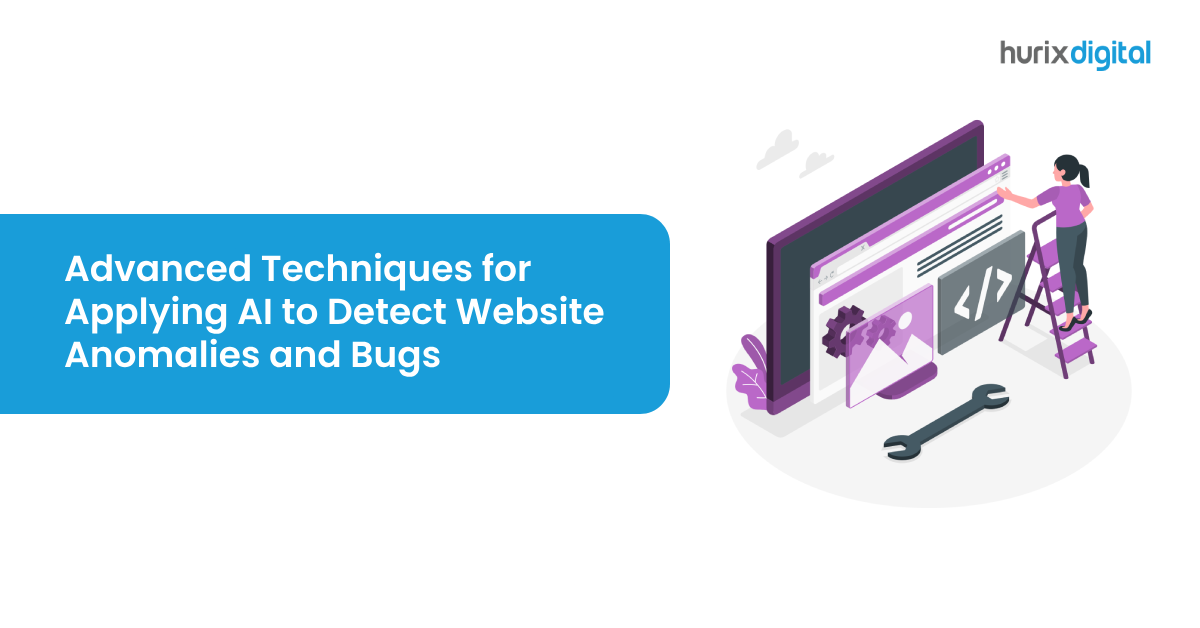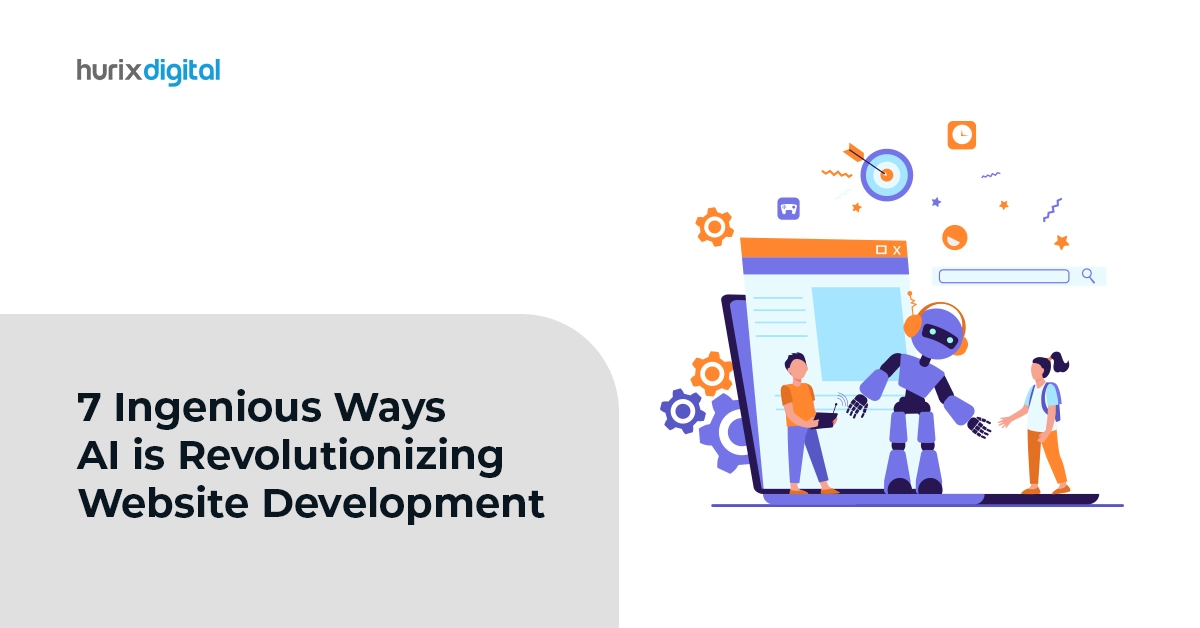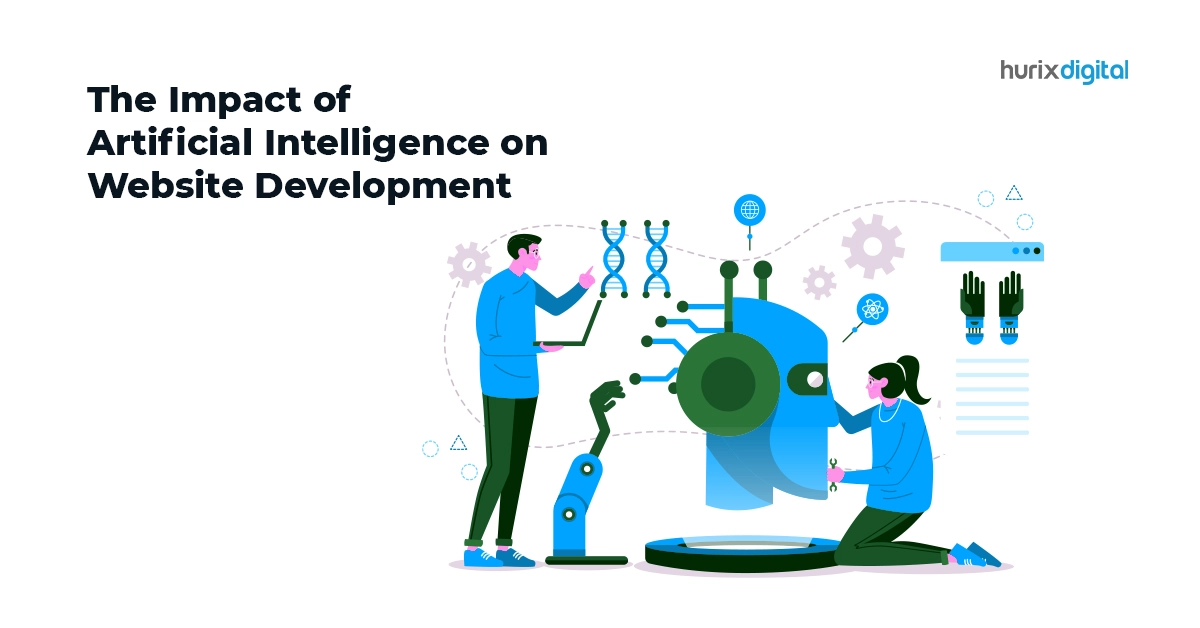
Advanced Techniques for Applying AI to Detect Website Anomalies and Bugs
Summary
Discover advanced techniques for using AI to detect website anomalies and bugs. This blog offers insights into how AI can improve website performance and reliability.
Summary
Discover advanced techniques for using AI to detect website anomalies and bugs. This blog offers insights into how AI can improve website performance and reliability.
A website that looks simple enough can be running thousands of lines of code in the background. Studies show that developers produce 70 bugs per 1,000 lines of code. This means your average web project can have over 700 bugs and anomalies present.
It’s 2024, and AI in web development is here to make your life easier. Not only does it streamline the coding process, but advanced AI techniques can now be applied to detect and eliminate website anomalies and bugs seamlessly.
Read on to learn how to apply AI to detect website anomalies and bugs to ensure a seamless and streamlined online experience.
Table of Contents:
- Understanding Bugs and Anomalies in Websites
- AI and Machine Learning in AI Bug Detection And Anomaly Detection
- Advanced Techniques for AI Anomaly Detection
- Utilizing AI for Future-Proof Web Development
Understanding Bugs and Anomalies in Websites
Bugs are usually flaws left behind during the coding process of a website that, at times, cause unintended results, such as a broken link or a crash. For example, if a checkout button won’t take you to the cart page or a login button won’t log you in, this is a bug.
Anomalies, on the other hand, are unusual behavior patterns such as an unexpected spike in website traffic or a drop in performance. If an attacker can inject malicious code into a website through a SQL statement and you do not have the security to check it, this is an anomaly.
The key difference between the two is their nature and impact. Bugs are a mismatch of functionality and can be detected as such. However, anomalies are patterns or events that occur with a change in the bulk or type of data being handled.
Bugs can be detected during the testing process. However, anomalies are harder to detect as you need to run large datasets through an algorithm to see the pattern in question.
Also Read: Five Best Practices for Incorporating AI Chatbots in Website Designing
AI and Machine Learning in AI Bug Detection And Anomaly Detection
AI has proven instrumental in detecting bugs more quickly and accurately.
Recently, Microsoft has been boasting 99 percent accuracy in AI bug detection. Such advancement has the potential to not only streamline the process but also overall quicken the development cycle.
AI and Machine Learning together have also revolutionized anomaly detection. Especially in areas of fraud and cybersecurity, AI-powered algorithms are capable of real-time intervention. These algorithms can be tailored or combined to handle the exact problem at hand, making them extremely effective.
Bug Detection through Code Analysis
- AI-powered bug detection tools analyze a codebase to identify recurring patterns. Using this knowledge, they then flag off potential bugs and vulnerabilities.
- AI can perform automated testing during early development cycles. Codebase scans can be used well in advance for early detection of bugs instead of performing an entire set of functionality testing to catch them.
- AI can perform static code analysis without having to execute it to catch preexisting bugs.
- It can also perform code reviews to catch any unlikely blocks of code that may cause problems in the future.
Bug Detection During Runtime
- AI can also be used for dynamic testing to catch bugs during runtime. AI can detect unusual patterns in real time and take immediate action to prevent minor issues. It can also use this data to predict where similar bugs may occur in the future.
- It can perform automated tasks of regression, integration, performance, and security testing through preset instructions that testers would have to perform otherwise manually.
- AI continuously tests and monitors a system, learning from each iteration. It keeps improving its testing strategies, and the system keeps getting more effective.
Management of the Development Cycle
- AI can also help detect which bugs are more critical and help with bug prioritization. It assesses the potential risk posed by a bug and prioritizes the one with the most capacity to damage or block the functioning of the system at the top.
- AI can also file reports, categorize them, and assign them to appropriate developers. It can send automatic notifications and news on new developments that may be relevant to individual developers, as well as continuously update on any changes within the system.
Behavioral Analysis and User Feedback Integration
By monitoring user interactions and analyzing patterns, AI tools can detect anomalies in user behavior that might be indicative of underlying issues. Integrating user feedback, sentiment analysis, and usage analytics provides valuable insights for developers to address potential bugs and improve the overall user experience.
Examples of AI Tools for Bug Detection
Below are a few examples of how AI is revolutionizing bug detection in web development:
- Railtown.ai: It offers bug detection along with the next series of steps needed, such as root cause analysis, ticket matching, progress report generation, etc.
- DeepBugs: This framework uses machine learning to extract positive and negative training examples from code, thus training itself to distinguish between correct and incorrect code.
- Bugsee: This integrates with bug-tracking tools like Jira, Trello, etc., to present live updates on bugs and crashes.
- Snyk Code: It alerts the team of critical bugs before a set deadline.
- Microsoft BugLab: It is a deep learning model that can detect and fix bugs in code. It operates on the “hide and seek” principle.
- Infer: It is an open-source static analysis tool developed by Meta to detect bugs using AI models.
Advanced Techniques for AI Anomaly Detection
Machine learning can be leveraged for both post-facto and real-time anomaly detection. Its predictive capabilities can lead to a more secure and robust system.
Using the power of AI, unsupervised anomaly detection techniques are being extensively used today. A few of them are as follows:
- Isolation Forest: This is an unsupervised detection algorithm that uses a decision tree to detect outliers in a data set.
- Local Outlier Factor: It identifies local outliers in a sample based on their lower density compared to their neighbors.
- Robust Covariance: It uses the statistical technique of estimating covariance to identify outliers.
- One-Class Support Vector Machine: This detects patterns that deviate from the norm.
- One-Class Support Vector Machine with Stochastic Gradient Descent: Works similarly to the previous method but uses stochastic gradient descent for better optimization.
Also Read: Website Security: Best Practices for Development and Maintenance
Utilizing AI for Future-Proof Web Development
AI integration into web development is not just a trend; it is a necessity that must be addressed, given the leaps and bounds being made in the digital space.
In this regard, you can team up with Hurix Digital to revolutionize your web development strategies. Our goal is to make AI in web development an easy task with extraordinary features such as intelligent detection and elimination of bugs, identification of anomalies, potential breaches beforehand, and so on.
Connect with us to explore how we can collaborate and empower your web development journey with AI in 2024.

Currently serving as the Vice President of Technology Delivery Operations at HurixDigital, a prominent global provider of digital content and technology solutions for publishers, corporations, and educational institutions. With over 16 years of experience spanning EdTech and various domains, I hold certification as a SCRUM Product Owner (CSPO). My expertise includes operations, finance, and adept people management skills.





